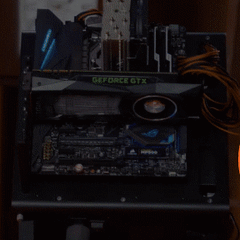what transformer to make this little fan run?
Hi, its to connect the fan directly to one of these!
My point is, if you connected the powerwires backwards for the LED strip, or the voltage provided by the PSU is above what is rated for the LEDs, the LEDs can burn out.
Read here regarding the 3 pin fan layout: http://pcbheaven.com/wikipages/How_PC_Fans_Work/. In short, the 3rd pin tells the Mobo how fast the fan is spinning, so I wouldn't worry about it.
I don't think DC motors have a polarity, but if there's a controller attached to that motor (most PC fans don't (I think) have them, unless they are brushless) there is a polarity concern (just connect black to ground and hot to red). I would try 5V first, and if the fan doesn't spin, try 12V. Modern day PC fans are 12V, but that doesn't look like a standard PC fan.
Just read the voltage ratings on the power supply and you should be fine. 12V even at 1 amp would most likely not hurt you.

















Create an account or sign in to comment
You need to be a member in order to leave a comment
Create an account
Sign up for a new account in our community. It's easy!
Register a new accountSign in
Already have an account? Sign in here.
Sign In Now